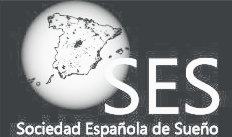Diagnosis of pediatric obstructive sleep apnea: preliminary findings using automatic analysis of airflow and oximetry recordings obtained at patients’ home
Gutiérrez-Tobal GC, Alonso-Álvarez ML, Álvarez D, del Campo F, Terán-Santos J, Hornero R. Biomedical Signal Processing and Control 18 (2015) 401–407.
The obstructive sleep apnea syndrome (OSAS) greatly affects both the health and the quality of life of children. Therefore, an early diagnosis is crucial to avoid their severe consequences. However, the standard diagnostic test (polysomnography, PSG) is time-demanding, complex, and costly. We aim at assessing a new methodology for the pediatric OSAS diagnosis to reduce these drawbacks. Airflow (AF) and oxygen saturation (SpO2) at-home recordings from 50 children were automatically processed. Information from the spectrum of AF was evaluated, as well as combined with 3% oxygen desaturation index (ODI3) through a logistic regression model. A bootstrap methodology was conducted to validate the results. OSAS significantly increased the spectral content of AF at two abnormal frequency bands below (BW1) and above (BW2) the normal respiratory range. These novel bands are consistent with the occurrence of apneic events and the posterior respiratory overexertion, respectively. The spectral information from BW1 and BW2 showed complementarity both between them and with ODI3. A logistic regression model built with 3 AF spectral features (2 from BW1 and 1 from BW2) and ODI3 achieved (mean and 95% confi- dence interval): 85.9% sensitivity [64.5–98.7]; 87.4% specificity [70.2–98.6]; 86.3% accuracy [74.9–95.4]; 0.947 area under the receiver-operating characteristics curve [0.826–1]; 88.4% positive predictive value [72.3–98.5]; and 85.8% negative predictive value [65.8–98.5]. The combination ofthe spectral information from two novel AF bands with the ODI3 from SpO2 is useful for the diagnosis of OSAS in children.
Ventana Cientifica. Octibre 2015. Artículo 27


